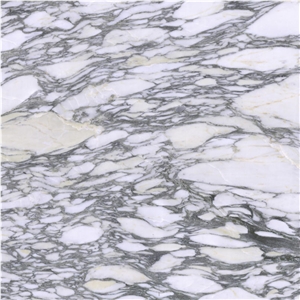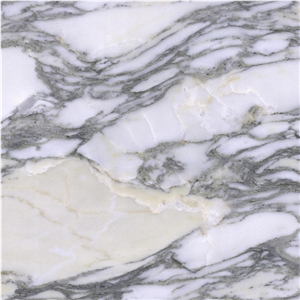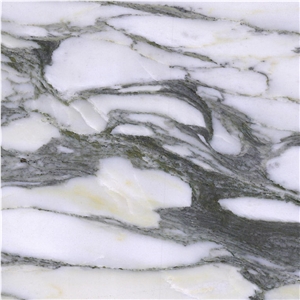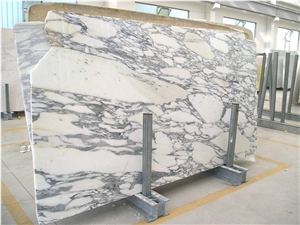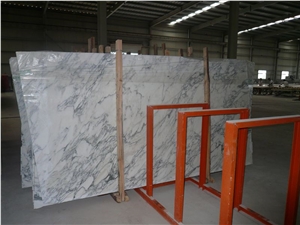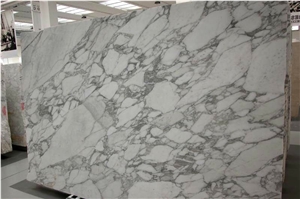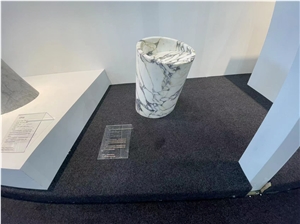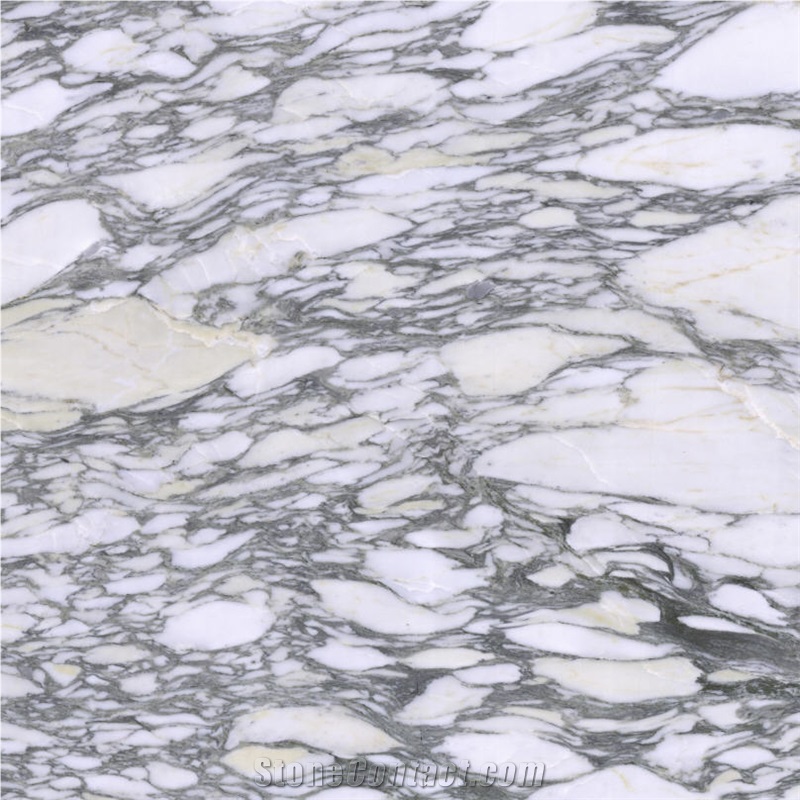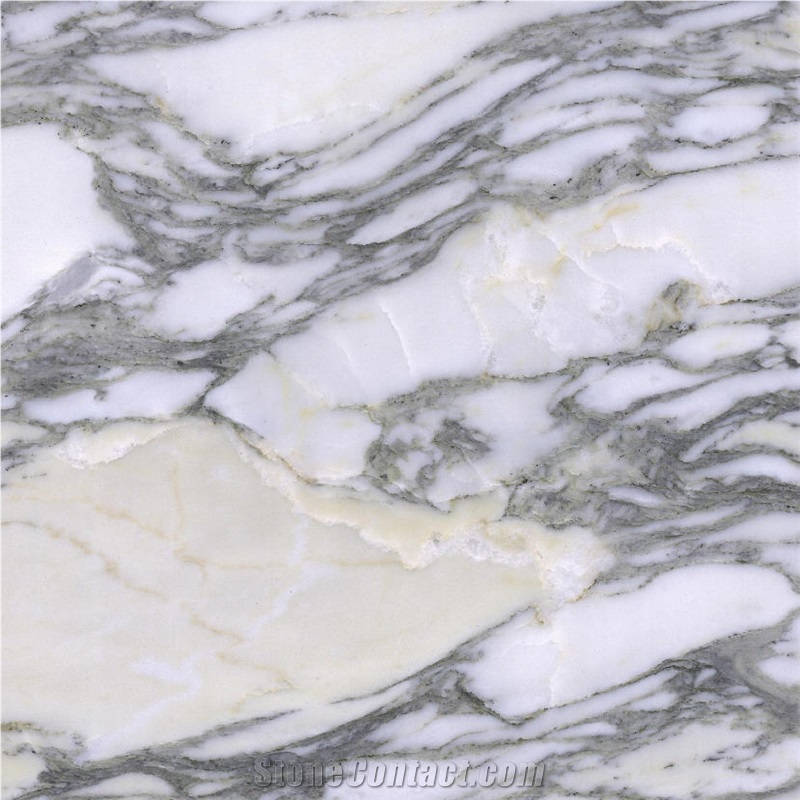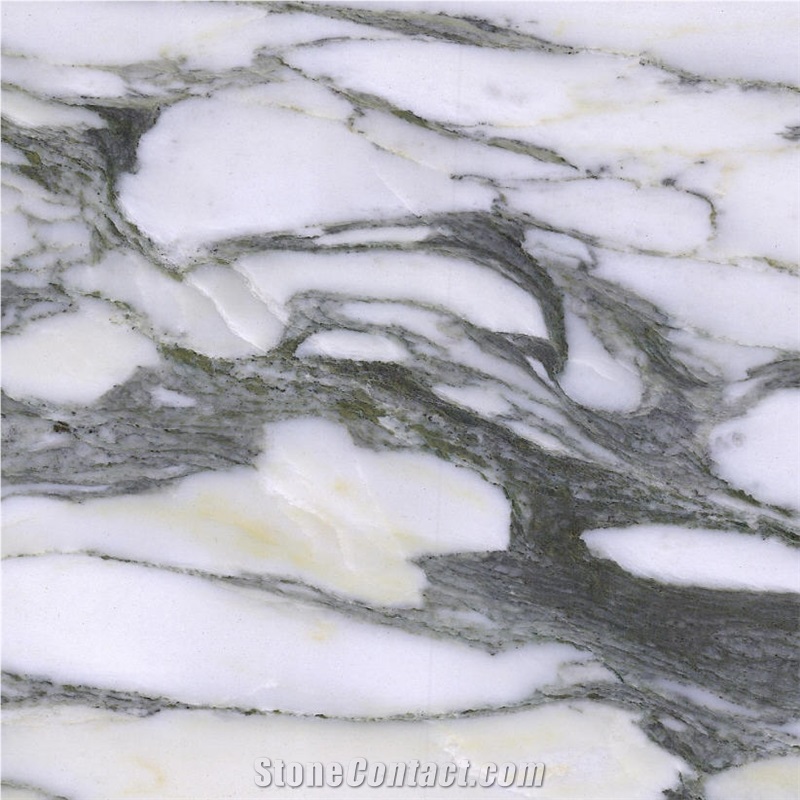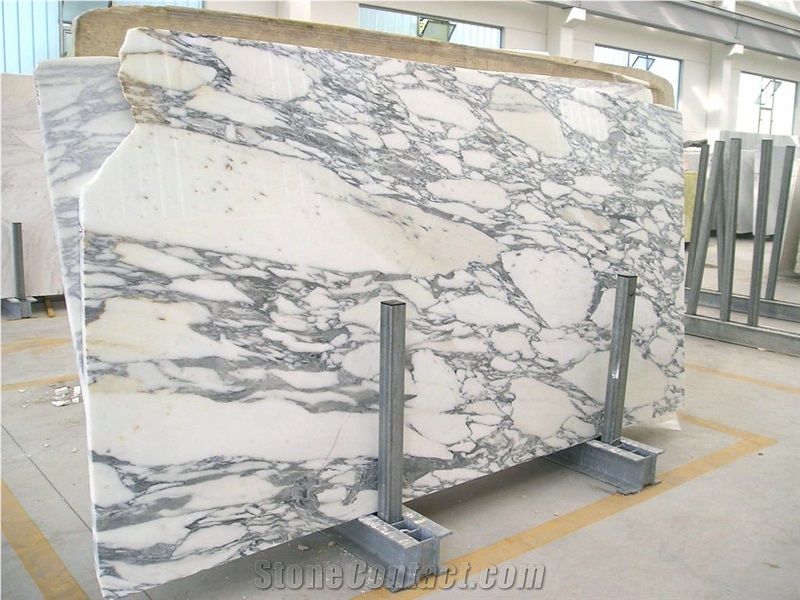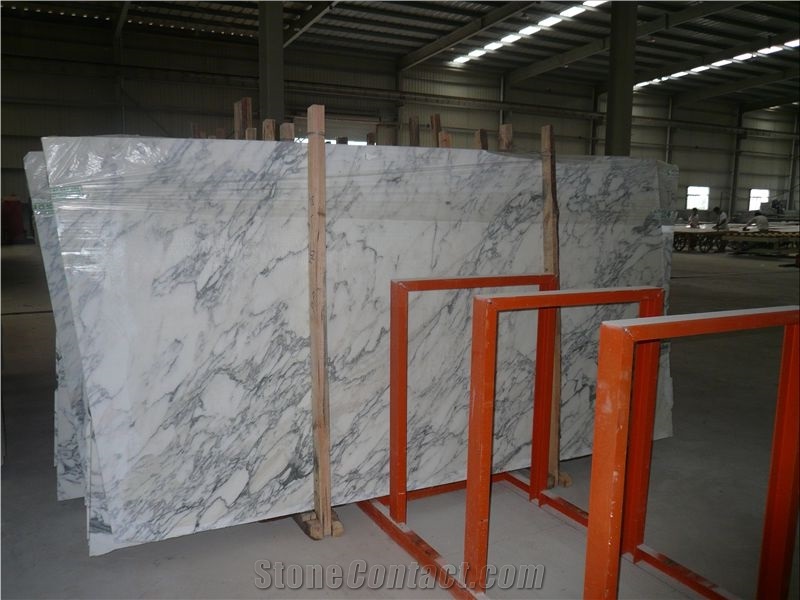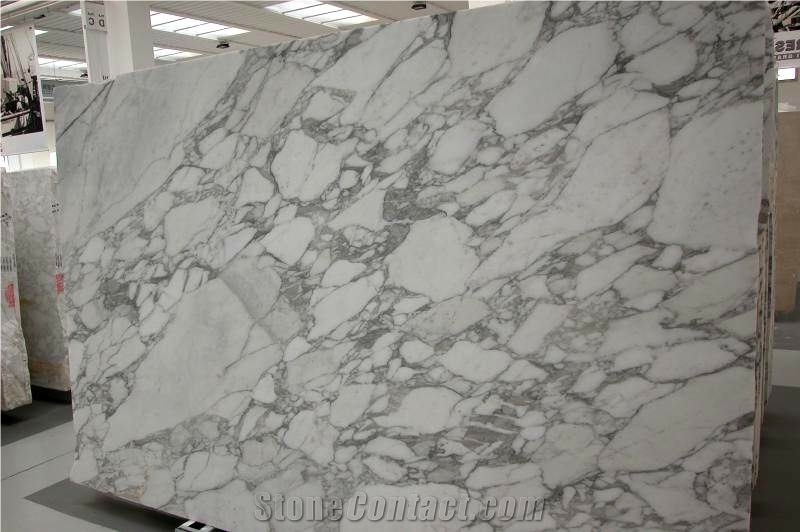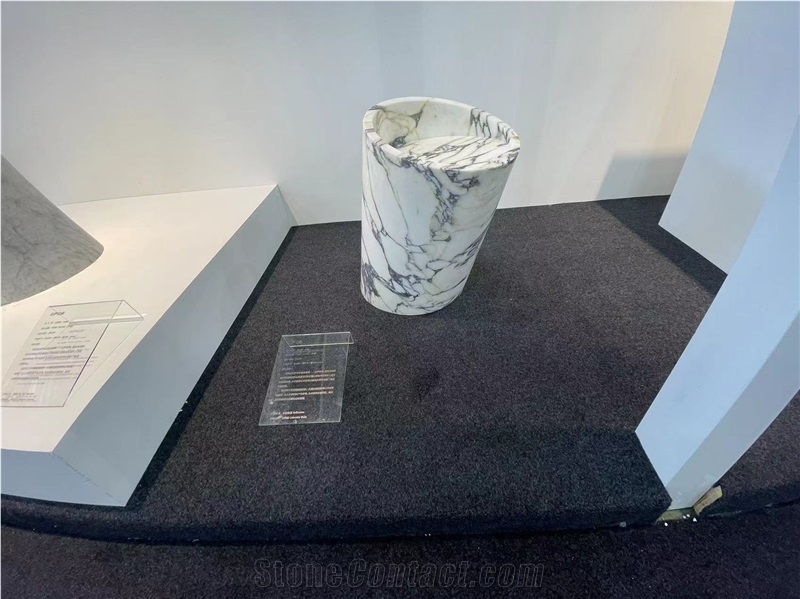Arabescato Corchia Marble
 Italy
(Stazzema, Provincia di Lucca, Toscana)
Italy
(Stazzema, Provincia di Lucca, Toscana)
Arabescato Corchia Marble is a highly sought-after natural stone originating from the Carrara region in Tuscany, Italy. It is a type of marble known for its striking appearance, characterized by intricate and captivating veining patterns.
Arabescato Corchia Marble showcases a predominantly white background with intricate grey veining. The veins in this marble can vary in intensity and thickness, creating a unique and eye-catching aesthetic. The veins may form intricate, flowing patterns or exhibit bolder, more dramatic movement across the surface of the stone. The contrasting colors and patterns of Arabescato Corchia Marble lend it a sense of elegance and sophistication.
In terms of texture, Arabescato Corchia Marble has a fine to medium grain structure. Its surface can be polished to a high gloss, enhancing the marble's natural beauty and accentuating the depth of the veining. The polished finish creates a smooth and reflective surface that contributes to its luxurious appeal.
Arabescato Corchia Marble is commonly used for interior applications, such as countertops, flooring, wall cladding, and decorative accents. It adds a touch of timeless beauty and refinement to various design styles, from classic to contemporary. This marble is often chosen for projects where a visually stunning and elegant statement is desired.
It's important to note that, like all natural stone, Arabescato Corchia Marble can exhibit variations in color, veining, and patterns. Each slab is unique, and it is recommended to view samples or consult with suppliers to ensure you have accurate information about the specific stone you are interested in and to select the slab that best suits your design preferences.
Petrographic definition: breccia marble
Massa Unit Volume: 2700 kg/m3
Water Absorption: 0.19%
Breaking Load Compression Simple: 101 MPa
Compression breaking load after freezing: 92 MPa
Tensile indirectly by bending 13.2 MPa
Its coefficient of Abrasion (referred to Granite St. Fedelino): 0.55
Impact resistance: minimum fall height: 51 cm
Linear thermal expansion coefficient of 5.4 x 10-5 0C-1
Knoop microhardness: 1648 MPa
Index unevenness of hardness: 1.25
Source: Università di Pisa - Politecnico di Torino

How should I clean Arabescato Corchia Marble countertop?

Can Arabescato Corchia Marble be used as a mortar pestle?

Can Arabescato Corchia Marble be used in a Turkish hammam as a wall and floor covering?

What grade is Italy's Arabescato Corchia Marble?

Can I use Arabescato Corchia Marble for kitchen countertop?

What should be the minimum thickness of the Arabescato Corchia Marble table top?

Is Arabescato Corchia Marble durable for use as outdoor patio pavers?

Is it safe to use Arabescato Corchia Marble mortar and pestle?

Can Arabescato Corchia Marble be used as a kitchen cutting board?

Can Arabescato Corchia Marble be used as a tabletop?

Is Italy's Arabescato Corchia Marble an expensive stone?

What is the difference between Arabescato Corchia Marble and Calacatta Extreme?

What are the different types of Arabescato Corchia Marble mosaics style?

What are the different types of Arabescato Corchia Marble columns?

Can Arabescato Corchia Marble be used for pool coping?

With Arabescato Corchia Marble kitchen countertops, which color kitchen cabinets should I choose?

Can Italy's Arabescato Corchia Marble be used outdoors?

What thickness of Arabescato Corchia Marble kitchen countertop would be better?

Can Italy's Arabescato Corchia Marble be used in a dining room?

What ruins white marble countertops?

What are the different types of Arabescato Corchia Marble moldings style?

How to repair the scratched Arabescato Corchia Marble kitchen countertop surface?

What thickness of Arabescato Corchia Marble backsplash tiles would be better?

How can I clean Arabescato Corchia Marble floor tiles?

Are there color variations of Italy's Arabescato Corchia Marble?

Can Italy's Arabescato Corchia Marble be used exterior applications in very humid climates?

How thick is Italy's Arabescato Corchia Marble slabs?

How can I repair the scratched surface of the Arabescato Corchia Marble wall tiles?

What is the coefficient of friction of Acid Washed Finish Italy's Arabescato Corchia Marble tiles?

Does Arabescato Corchia Marble scratch easily?

Does Arabescato Corchia Marble easly stain?

Can I use Arabescato Corchia Marble for commercial bar countertop?

What is the chemical composition of Arabescato Corchia Marble?

How thin can Arabescato Corchia Marble be cut as tiles?

With Arabescato Corchia Marble kitchen countertops, which color glass mosaic backsplash should I choose?

Can Italy's Arabescato Corchia Marble be used in landscaping?

What is the physical properties of Arabescato Corchia Marble?
-

 China
China
 14YRDiamond members are premium members on platform, providing members with comprehensive approach to promoting their products, increasing products exposure and investment return to maximize.
14YRDiamond members are premium members on platform, providing members with comprehensive approach to promoting their products, increasing products exposure and investment return to maximize.
 Verified Supplier is for prove company authenticity,including business license,trade license and effective office space,to enhance buyers' trust to suppliers and their products, reducing communication costs.
Verified Supplier is for prove company authenticity,including business license,trade license and effective office space,to enhance buyers' trust to suppliers and their products, reducing communication costs.
Contact Supplier
-

 Italy
Italy
 4YRDiamond members are premium members on platform, providing members with comprehensive approach to promoting their products, increasing products exposure and investment return to maximize.
4YRDiamond members are premium members on platform, providing members with comprehensive approach to promoting their products, increasing products exposure and investment return to maximize.
 Verified Supplier is for prove company authenticity,including business license,trade license and effective office space,to enhance buyers' trust to suppliers and their products, reducing communication costs.
Verified Supplier is for prove company authenticity,including business license,trade license and effective office space,to enhance buyers' trust to suppliers and their products, reducing communication costs.
Contact Supplier
-

Xiamen Global Stone Imp. & Exp. Co.,Ltd.
 China
China
 5YRDiamond members are premium members on platform, providing members with comprehensive approach to promoting their products, increasing products exposure and investment return to maximize.
5YRDiamond members are premium members on platform, providing members with comprehensive approach to promoting their products, increasing products exposure and investment return to maximize.
 Verified Supplier is for prove company authenticity,including business license,trade license and effective office space,to enhance buyers' trust to suppliers and their products, reducing communication costs.
Verified Supplier is for prove company authenticity,including business license,trade license and effective office space,to enhance buyers' trust to suppliers and their products, reducing communication costs.
Contact Supplier
-

XIAMEN REFINESTONE INDUSTRIAL CO.,LTD.
 China
China
 14YRDiamond members are premium members on platform, providing members with comprehensive approach to promoting their products, increasing products exposure and investment return to maximize.
14YRDiamond members are premium members on platform, providing members with comprehensive approach to promoting their products, increasing products exposure and investment return to maximize.
 Verified Supplier is for prove company authenticity,including business license,trade license and effective office space,to enhance buyers' trust to suppliers and their products, reducing communication costs.
Verified Supplier is for prove company authenticity,including business license,trade license and effective office space,to enhance buyers' trust to suppliers and their products, reducing communication costs.
Contact Supplier
-

Shenzhen Fenghua Industry Co.,Ltd.
 China
China
 3YRDiamond members are premium members on platform, providing members with comprehensive approach to promoting their products, increasing products exposure and investment return to maximize.
3YRDiamond members are premium members on platform, providing members with comprehensive approach to promoting their products, increasing products exposure and investment return to maximize.
 Verified Supplier is for prove company authenticity,including business license,trade license and effective office space,to enhance buyers' trust to suppliers and their products, reducing communication costs.
Verified Supplier is for prove company authenticity,including business license,trade license and effective office space,to enhance buyers' trust to suppliers and their products, reducing communication costs.
Contact Supplier
-

Xiamen Landiview Stone Co. Ltd.
 China
China
 8YRDiamond members are premium members on platform, providing members with comprehensive approach to promoting their products, increasing products exposure and investment return to maximize.
8YRDiamond members are premium members on platform, providing members with comprehensive approach to promoting their products, increasing products exposure and investment return to maximize.
 Verified Supplier is for prove company authenticity,including business license,trade license and effective office space,to enhance buyers' trust to suppliers and their products, reducing communication costs.
Verified Supplier is for prove company authenticity,including business license,trade license and effective office space,to enhance buyers' trust to suppliers and their products, reducing communication costs.
Contact Supplier
-

Shenzhen Leeste Industry Co., Ltd
 China
China
 12YRDiamond members are premium members on platform, providing members with comprehensive approach to promoting their products, increasing products exposure and investment return to maximize.
12YRDiamond members are premium members on platform, providing members with comprehensive approach to promoting their products, increasing products exposure and investment return to maximize.
 Verified Supplier is for prove company authenticity,including business license,trade license and effective office space,to enhance buyers' trust to suppliers and their products, reducing communication costs.
Verified Supplier is for prove company authenticity,including business license,trade license and effective office space,to enhance buyers' trust to suppliers and their products, reducing communication costs.
Contact Supplier
-

 Italy
Italy
 4YRDiamond members are premium members on platform, providing members with comprehensive approach to promoting their products, increasing products exposure and investment return to maximize.
4YRDiamond members are premium members on platform, providing members with comprehensive approach to promoting their products, increasing products exposure and investment return to maximize.
 Verified Supplier is for prove company authenticity,including business license,trade license and effective office space,to enhance buyers' trust to suppliers and their products, reducing communication costs.
Verified Supplier is for prove company authenticity,including business license,trade license and effective office space,to enhance buyers' trust to suppliers and their products, reducing communication costs.
Contact Supplier
-

 Italy
Italy
 4YRDiamond members are premium members on platform, providing members with comprehensive approach to promoting their products, increasing products exposure and investment return to maximize.
4YRDiamond members are premium members on platform, providing members with comprehensive approach to promoting their products, increasing products exposure and investment return to maximize.
 Verified Supplier is for prove company authenticity,including business license,trade license and effective office space,to enhance buyers' trust to suppliers and their products, reducing communication costs.
Verified Supplier is for prove company authenticity,including business license,trade license and effective office space,to enhance buyers' trust to suppliers and their products, reducing communication costs.
Contact Supplier
-

The request includes: 1. surface finished, size 2. quantity required






